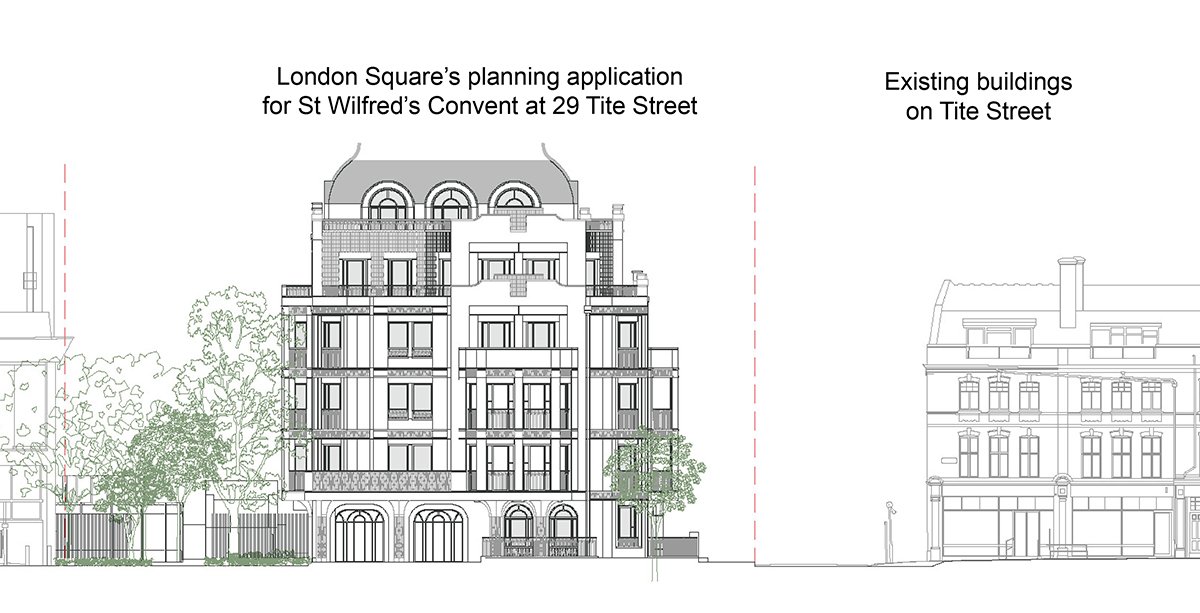
London Square’s £240 million scheme would demolish St Wilfrid’s Convent for 42 luxury flats – but its core planning failings remain unchanged.
London Square is proposing the demolition of the former St Wilfrid’s Convent and care home at 29 Tite Street, replacing it with a mixed-use development of 42 new homes (known in planning terms as Use Class C3, meaning private residential housing) within a new building rising to six storeys above ground, and stretching two storeys below it.
The Friends of Tite Street has examined the application carefully, and despite nearly two years of engagement with the developer, the three principal failings we identified at the outset remain entirely unaddressed.
First, the building is simply too tall and too bulky for this narrow, historic street. At six storeys plus plant rooms it rises to 23.35 metres (that’s 76.6ft) at its highest point. That is nearly a whole extra storey above the Borough’s own policy limit of 21 metres for residential development in this area.
These plans would overwhelm Royal Hospital Road, create a canyon effect on Tite Street, dominate the listed artists’ studios opposite and destroy the human scale that gives this part of Chelsea its character. The building would darken the street and erase the rhythm of light and space that defines its charm.
Second, the design builds directly across two protected “townscape gaps”. First, the open garden and the former chapel at the south end, and second the northern break next to Royal Hospital Road. These are not incidental spaces, but deliberate features identified in the Royal Hospital Conservation Area Appraisal – the visual breathing room that lets the street’s distinctive architecture sing.
Third, the proposed façade bears no relationship to the architectural variety of Tite Street. Where Godwin’s Arts & Crafts houses dance with gables and asymmetry. London Square’s design is monolithic, top-heavy and horizontal, importing alien motifs – like its repetitive horizontal bands – are not an authentic reflection of the street’s historic design language.
Compounding these failings, the scheme removes a protected care-home use without replacement and provides no affordable housing whatsoever – a remarkable omission for a development of this scale.
Underlying all of this is the uncomfortable truth: London Square – which is now wholly owned by Aldar Properties, listed on the Abu Dhabi Securities Exchange, with the United Arab Emirates’ sovereign wealth fund as its largest shareholder – overpaid for the site and is now seeking to recover that cost in floor area rather than design quality. The result is a proposal driven by financial expedience, not by planning policy or respect for place.
For a council that calls itself “fiercely proud of its cultural heritage,” this is a moment for the Royal Borough of Kensington & Chelsea to stand firm. The Friends of Tite Street are not opposed to renewal – only to overdevelopment. A sensitive, policy-compliant scheme could bring life back to the site without disfiguring Chelsea’s most historic street. London Square has had every opportunity to deliver such a design. It has not done so.



